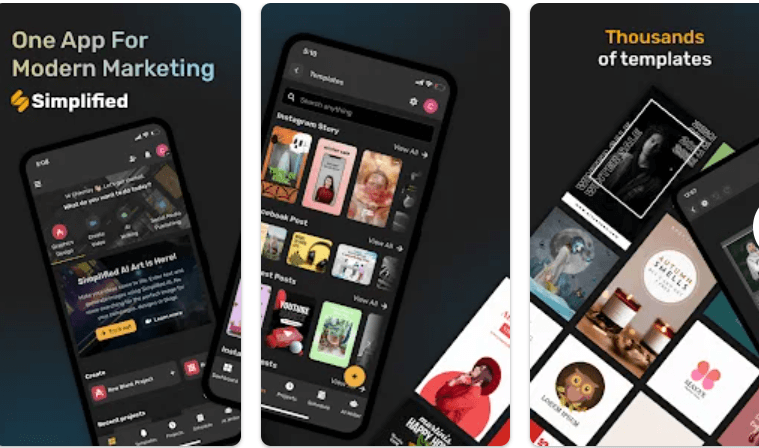
Having a brand message that resonates with and attracts customers is a big component of any brand. Your brand messaging can help you grow a loyal following, bring in new customers and target specific audiences. It’s therefore easy to see why brands focus so much on their brand messaging strategies.

The most successful brands are all built on the foundation of a well-crafted brand image and targeted messaging. So, if you feel this is an area that could be improved in your own business strategy, read on to learn more about the power of brand messaging and how to use it effectively.
Related: Your Ultimate Guide To Product Branding
What is brand messaging?
Brand messaging is a broad term that describes how the public perceives your brand. It is how people learn what you’re all about and decide whether your brand is for them. Moreover, it consists of the words, tone, language, and any other type of communication that forms the identity or “voice” of your brand.

Source: Unsplash
Brand messaging tells your audience what your brand stands for, and why they should trust it. As such, every brand needs to have messaging that attracts appropriate customers and stimulates a desire for its services. Additionally, brand messaging ties into every aspect of your company from marketing to public relations. Therefore, having an effective brand messaging strategy that resonates, will inspire people to choose your product or service over the competition.
Some examples of brand messaging are:
- Taglines
- Ad slogans and campaigns
- The tone of voice and language used in copy
- Your sales pitch
- Online and printed marketing materials

Source: Unsplash
Your Brand Message should include;
- Your core values and the mission behind your business
- Your Unique Selling Proposition. It should highlight what sets your brand apart from the competition.
- Your brand’s tone and voice should remain consistent across all communication channels, whether it’s formal, friendly, informative, or humorous.
- A compelling brand story that helps your audience connect emotionally with your brand.
Related: Building Brand Awareness: Top Secrets That Competitors Won’t Share
The Importance of Brand Messaging
Effective brand messaging can make or break your business. Here’s why it’s crucial:
- Consistency: Consistent messaging helps build trust with your audience. When your messaging is in harmony across all platforms, it becomes easier for customers to remember and relate to your brand.
- Clarity: Clear messaging conveys your brand’s identity and what it stands for, making it easier for potential customers to understand the value you offer.
- Connection: Well-crafted brand messaging establishes an emotional connection with your audience. It humanizes your brand and makes it more relatable.
- Competitive Edge: A unique and compelling brand message sets you apart from competitors. It’s an opportunity to highlight what makes you different and better.
Related: Marketing, Branding, Advertising: What’s The Difference?
How To Craft an Effective Brand Messaging Framework
1. Understand your target audience:
Who you are selling to will have a big impact on what your brand messaging should be. It is crucial to identify your brand’s target audience and understand them.

However, if your target audience is too broad, your copy will not resonate with them effectively. Hence, it is important that you focus on your ideal buyer and go beyond basic demographics. Aim to understand their thought process, behavioral habits, and what influences them, including their belief and values.
2. Marketing your unique selling proposition (USP):
An important part of your brand image is your unique selling proposition or USP. Your USP is the reason why your customers should choose your brand over the competition. Additionally, it is the core solution that your product or service provides to your customer.

Source: Unsplash
Hence, having a proper USP and understanding its benefits for your target buyer is important for your brand marketing strategy. Your copy should clearly communicate why your USP is unique and great for your target audience.
3. Tone of voice and language:
The tone of voice and language used across platforms operated by your brand must align with your brand messaging strategy. Moreover, this consistency will make your brand recognizable and make your brand image memorable to your customers.
Using the right tone and language for your target audience can greatly increase your popularity, conversions, and loyalty. For example, using current pop culture references and everyday language will appeal to younger generations.
4. Your brand story:

Source: Unsplash
Every brand has a story and telling this story is an important component of your brand messaging strategy. One of the best resources on this topic is Building a StoryBrand by Donald Miller, which we will talk about more below. Creating a brand story will help you effectively communicate your USPs and values with your customers and show them why they should choose you.
Related: Your Step-By-Step Guide to Creating A Branding Strategy
5. Visual Branding
Your visual elements, such as logos, color schemes, and fonts, should also align with your brand message. Consistency in visual branding is essential.
6. Content Strategy
Create a content strategy that aligns with your brand message. Plan the type of content you’ll produce and where you’ll publish it.
7. Feedback Loop
Regularly gather feedback from your audience and make adjustments as necessary to improve your messaging.
Related: Your Step-By-Step Guide to Creating A Branding Strategy
Brand Messaging Examples
Here are some real-world brand message examples:
1. Nike

Source: Unsplash
Nike’s brand messaging centers around their iconic slogan, “Just Do It.” This three-word mantra motivates people to overcome challenges and achieve their goals through determination and effort.
Nike’s marketing emphasizes empowerment, features world-class athletes as role models, and maintains a consistent, authentic voice. This message has a global appeal and has helped Nike become a renowned leader in sports apparel and footwear.
Related: Nike Marketing Strategy: How They Do It And You Can Too!
2. Apple

Source: Unsplash
Apple’s brand messaging revolves around innovation, simplicity, and design. They promise products that make life easier and more enjoyable. Their marketing consistently reflects these principles, building trust and brand loyalty among users worldwide.
The company’s consumers are nearly a fan club and fully understand the impact that the products have on their lifestyle. That is exactly what the company explores.
Its campaigns feature concise messages, using direct but not too casual language. The focus is on aligning simple descriptions of features and functionality, illustrating how all this impacts the user’s day-to-day life.
Related: Apple’s Branding Strategy & What Marketers Can Learn From It
3. Coca-Cola

Source: Unsplash
Coca-Cola’s brand messaging is centered on happiness and togetherness. Their campaigns encourage people to share a Coke with friends and celebrate life’s moments. It is a message that resonates with people, promoting a sense of joy and connection, making Coca-Cola a global icon of refreshment and happiness.
Related: Evolution of Brands: A Case Study Of Coca-Cola
4. Simplified

Source: Simplified
Simplified’s brand messaging is all about making branding, design, and content creation simple, accessible, and effective. It helps businesses to tell their unique stories through clear, consistent messaging.
This AI-powered platform offers tools, templates, and features to simplify the branding process, enabling businesses to create compelling and consistent messages that resonate with their audience.
Related: The Only Brand Kit Guide That You’ll Need!
Simplified- Your Essential Brand Messaging Tool

Source: Simplified
Introducing Simplified, your go-to solution for crafting and implementing an effective brand messaging strategy. This AI-driven platform offers a range of features and tools that simplify the entire process. Some of these include:
- Brand Messaging Templates: Simplified offers a variety of templates to help you kickstart your brand messaging journey.


- Brand Book: A Special and Unique feature of Simplified is BrandBook. You can save your assets, style, and elements of your Brand in a single folder and can use them consistently across all your projects.


- Visual Branding Features: It helps you create visually stunning and consistent branding elements, such as logos and color schemes.


- Content Creation Tools: Simplified assists you in generating engaging content that aligns with your brand’s voice and mission.
- Feedback and Analytics: It also provides tools for collecting feedback and analyzing data, enabling you to refine your brand message over time.

Source: Simplified
And that’s not all! Simplified provides you with a 360-degree solution for all your content needs. You can plan, write, and design visually stunning posts, edit videos, schedule posts, manage multiple accounts, track insights, and what not! Simplified has 1000s of built-in templates to ease your design process. With all these features, your brand message remains strong and consistent effortlessly. And the best part is, all this for Free!
Related: Illustration Inspiration: 10 Unique Examples Of Brand Illustration
Bottomline
Effective brand messaging is the cornerstone of a successful brand identity. It shapes the way your audience perceives you, influences their purchasing decisions, and promotes brand loyalty.
Simplified is here to simplify and enhance your brand messaging journey with its powerful tools, templates, and features. Take the first step toward creating a compelling brand message and watch your business thrive with Simplified.










